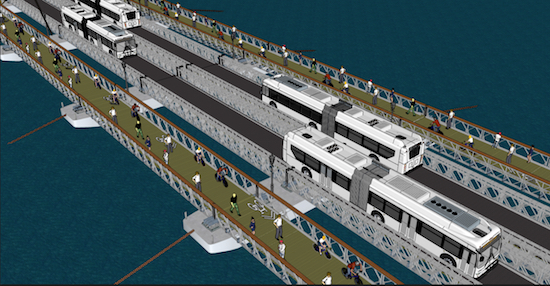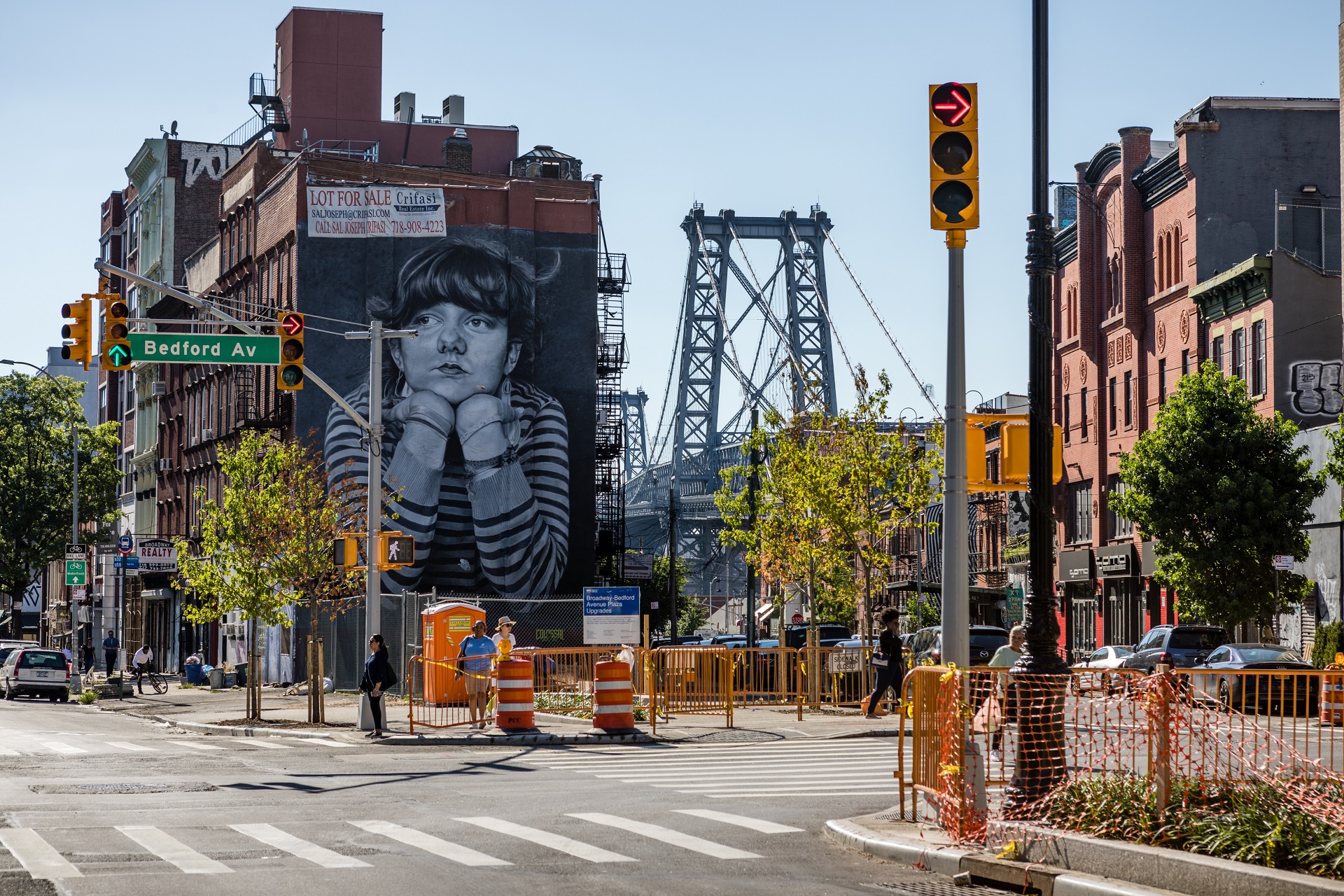Could a pontoon bridge be the solution to the L-train shutdown?
Transit groups say focus should remain on Williamsburg Bridge

An East River pontoon bridge connecting Williamsburg to Manhattan is the latest proposal on how to mitigate the L-train shutdown. Renderings courtesy of L-Ternative Bridge
It seems like any and all mitigation options are on the table for the L-train shutdown these days.
First, there was the East River Skyway, a proposed aerial gondola connecting Brooklyn and Manhattan, which received the backing of U.S. Rep. Carolyn Maloney, Councilmember Stephen Levin and state Assemblymember Joseph Lentol.
Now, an East River pontoon bridge is being floated (no pun intended) as a possibility.
